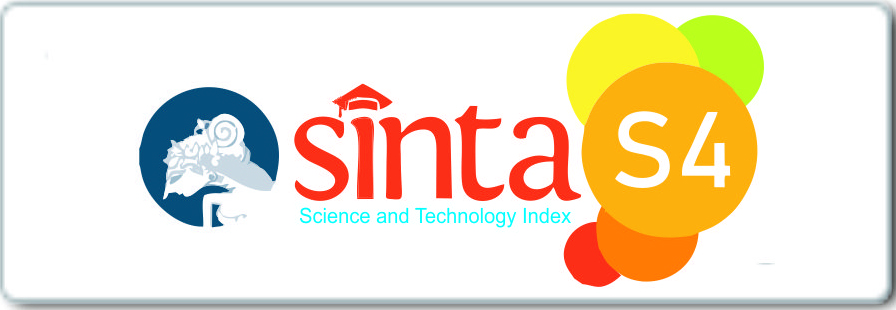Analysis of Soft Tissue Cephalometry in Skeletal Class I with Post Operation Unilateral and Bilateral CLP
Downloads
Background: Facial appearance is an important diagnostic criterion that must be considered in orthodontics treatment plan. Orthodontics treatment is one of the dental treatments to prevent or correct tooth position abnormalities so that optimal function can be achieved including occlusion, proportional arrangement of the teeth and facial profile, as well as the harmony of facial profiles. Common facial abnormality cases include cleft lip and palate. Cleft lip and palate are caused by congenital defects and environmental factors. Purpose: The study was aimed to determine post-operative soft tissue cephalometric analysis of skeletal class I with post-operative of unilateral and bilateral CLP. Methods: This was a descriptive observational study. The subjects were secondary data from radiographic cephalometry obtained from the CLP Center Premier Hospital Surabaya and Universitas Airlangga Dental Hospital. Result: There was a significant difference in line angle parameters in both groups with a significant value of 0.002 (p <0.05). There were also significant differences in the Li-H line parameters in both groups with a significant value of 0.000 (p <0.05). There were H line angle and Li-H line differences in soft tissue cephalometric analysis between skeletal class I group with post-operative unilateral and bilateral CLP group. Conclusion: There was no difference in soft tissue cephalometric analysis between the post-operative of unilateral CLP and bilateral CLP on all parameters.
Kocadereli I. Changes in Soft Tissue Profile After Orthodontic Treatment with and without Extraction. Am J Orthod Dentofac Orthop [Internet]. 2002;jul;122(1);67-72
Proffit W, Field H. Contemporary Orthodontic. 3rd ed. America: Mosby Year Book; 2000.
Agus S. Penanganan Bibir Sumbing (CLP) secara Paripurna [Internet]. Surabaya; 2012. Available from: id.scribd.com/doc/163768056/penanganan-Bibir-Sumbing-Full-Text
Yusra Y, Widhayanti D, Widijanto S. Evaluasi Jaringan Lunak Fasial Abang-None Jakarta. Majalah Ilmiah Kedokteran Gigi Fakultas Kedokteran Gigi Universitas Trisakti. 2005;5–12.
Mariana M, Milene A, Cristiane B, Enio M. Base of The Skull Morphology and Class III Malocclusion in Patient with Unilateral Cleft Lip and Palate. Dent Press J Orthod. 2014;20(1):79–84.
Berkowitz S. Cleft Lip and Palate. 2nd ed. Germany: Springer; 2006. 63–65 p.
Wu T, Ellen W, Chen P, Huang C. Craniofacial Characteristics in Unilateral Complete Cleft Lip and Palate Patients with Congenitally Missing Teeth. Am J Orthod Dentofac Orthop. 2013;144(3):385–6.
Fonseca R. Oral Maxillofacial Surgery. WB. Sounder; 2017.
Jacobson A. Radiographic Cephalometry from Basic to 3-D Imaging. New Malden, Surrey, UK: Quintesence Publishing Co, Inc; 2006.
Albery E, Hathorn I, Pigott R. Cleft Lip and Palate a Team Approarch. Bristol: Wright; 1986. 8,9,21.
Rose EL. Orthodontic Treatment of The Patient with Complete Cleft of Lip, Alveolus and Palate. 2000.
Jyosna P, Chandrashekar H. Cephalometric Profile Evaluation in Patient With Cleft and Lip Palate. Int J Contemp Dent. 2011;2(4):68.
This is an open access journal, and articles are distributed under the terms of the Creative Commons Lisence, which allows others to remix, tweak, and build upon the work non-commercially, as long as appropriate credit is given and the new creations are licensed under the identical terms.
Copyright notice:
IJDM by UNAIR is licensed under a Creative Commons Atribusi 4.0 Internasional.
- The journal allows the author to hold the copyright of the article without restrictions.
- The journal allows the author(s) to retain publishing rights without restrictions.
- The legal formal aspect of journal publication accessibility refers to Creative Commons Attribution (CC BY)
















